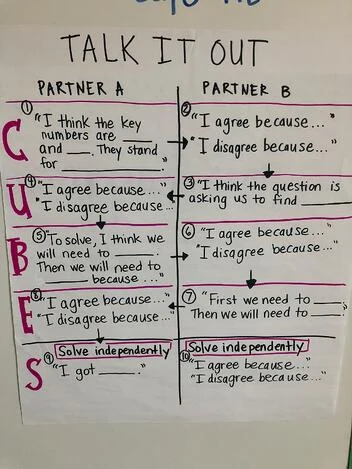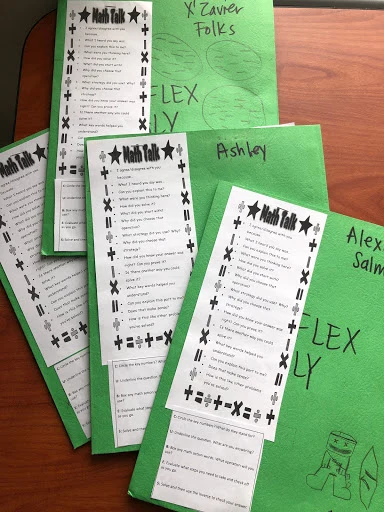I am a firm believer that with the right coaching structure around them, most educators will relish the opportunity to creatively design solutions to the multiple challenges they are facing in their classrooms every day,
Don’t get me wrong, I am all for a not-reinventing-the-wheel approach, and for leveraging strong existing strategies and lesson plans. At BetterLesson we believe that planning quality instruction should not be as challenging as many teachers find it to be on a daily basis, which is why we make available thousands of lesson plans and over 100 public strategies.
That being said, when we coach our teachers, instructional coaches, and principals, we often customize an existing strategy to meet the exact needs of learners in a specific context. Sometimes, we will even create a new approach from scratch, test it out, measure its impact, and continue to tweak it until it finally reaches its intended goal. This process, which we call “Try, Measure, Learn,” provides the structure for constant innovation driven by the qualitative and quantitative data collected by educators in their schools.
In this blog post, I interview Marleigh Daly—a passionate 3rd-grade teacher at Nations Ford Elementary in Charlotte, NC. Marleigh started the school year by telling me about the challenge of supporting students in making sense of complex word problems. From then on, I tried to support her impressive creative thinking as she developed a new teaching strategy—one that she and her kids now proudly call “Talk it Out!”
Learn all about Marleigh’s strategy in this interview and see it in action!
Romain: Marleigh, how would you describe “Talk it Out!” in one sentence?
Marleigh: The “Talk it Out!” strategy encourages and supports students to work through multi-step word problems by communicating their process step by step with a partner.
Romain: Why did you feel compelled to design this strategy?
Marleigh: Third grade is difficult because the math problems become increasingly more complex. In earlier grades, students could try to find a keyword and infer an operation to use based on that word. When they get to me, it becomes much more difficult for them to make sense of the problem and to lay out a multi-step strategy. It’s almost like they have to relearn what they need to do to really pick apart a word problem and see what it wants from them.
I started the year teaching my students the CUBES strategy. An acronym used by elementary math teachers to break down multiple-step word problems. Here is what each letter stands for.
C– circle key numbers
U– underline the question
B– box math action words
E– Evaluate and eliminate
S– Solve
The strategy is incredibly beneficial when it comes to realizing that there is more than one step or understanding when the operation is not based on the obvious math-related word (i.e. “more” vs. “add”).
However, I felt like my students were focused more on the process of following the steps of CUBES—circling key numbers, boxing, etc. rather than understanding the purpose behind it. They needed more scaffolding and support to think about what was really happening in the word problem.
I wanted more of an emphasis on the E (evaluate) and S (solve) steps. I wanted to find a way for them to pause, think, and talk through what was going on when they got to these steps.
Romain: So what happens now when your students decide to “Talk it Out!” instead of what they were doing before?
First of all, they get excited! Then, they pair up and talk step by step through the problem using the following resources:

Talk it Out Anchor Chart Math Talk Sentence Stems

Math Talk Sentence Stems
Here is a video showing two of my students engaging through the protocol.
Romain: Describe the impact you have seen on your kids and how that has led to you sharing your strategy via this blog post.
Marleigh: The goal of this strategy was to eventually have the students talk through the steps by themselves. I wanted them to be able to support their decisions to add/subtract/round etc. rather than to say “I divided because I saw the word ‘equal.’” I’ve noticed my students really defend their answers now. It has impacted classroom discussions in a very positive way. It’s also been away for many of my ELL students to practice their math vocabulary in a partner setting which has given them confidence when they do speak in front of the class. I actually interviewed a few of them last week and this is what they had to say:
Well, next year, I will begin teaching Talk it Out first to support the Evaluate and Solve steps. I would also like to get in touch with teachers from earlier grades and discuss how some words can be more complex than others in the context of a math class. For example, by the time they get to 3rd-grade students associate the word more with the idea of adding. But we have to open their minds to the idea that “more” won’t always tell you to add. How many more do you have than Steve makes you actually want to subtract, right? From an early age, we have to focus on getting students to tell the story of a problem as opposed to resorting to pulling steps from keywords.
I would also like to continue improving the independent aspect of the process. Because I have more of a homogeneous group as far as math levels go, there still needs to be a bit of scaffolding. In a heterogeneous classroom setting, it would be easier to pair up students on different levels so that one can act as a mentor for the other student through the conversation.
Ultimately, I know that I will continue to encourage my students to push each other’s thinking. I want them to engage in mathematical discourse in order to build the skills required for Math to truly make sense to them. Plus, you can see in those videos, that they have lots of fun in the process, and that is priceless.







